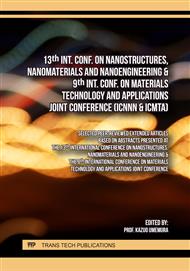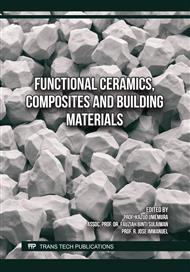p.29
p.41
p.49
p.55
p.61
p.71
p.77
p.87
p.99
Effective Refractive Index Estimation of Composite Structures Using the Mie Theory and Layer Transmissivity Approach
Abstract:
Radiative cooling (RC) technology is becoming crucial with several prospective applications, either as a standalone or in conjunction with conventional cooling systems. The RC flux can be enhanced by tailoring selective spectral emissivity and suitable surface orientation (i.e., azimuth and tilting orientation). However, it has not been studied extensively from the perspective of emissivity modification in the composite layers. Polymer and ceramic particle composite’s emissivity (i.e. selective wavelength dependent spectrum) is based on the effective refractive index estimation. In this article we estimate the effective refractive index of the composite structures using Mie theory and the layer transmissivity approach. In the Mie theory, forward scattering from a composite sphere is monitored with respect to background refractive index. In the layer transmissivity approach, refractive index of composite is estimated from the transmission spectrum (i.e. Fresnel equations) of number of layers with different thickness. The refractive index from these two approaches is in the close agreement at large wavelengths (non-dimensional size parameter x=2πr/λ is below 1). However, the layer transmissivity approach yields a higher effective refractive index for the wavelength comparable to particle size (x =>1) inclusions with lots of fluctuations. The effective refractive index estimation aids in the designs of distributed Bragg stack and quasi-amorphous structure. The selective emissivity within the solar spectrum is also expected from quasi-amorphous structures of these existing polymer and ceramic particles composites. The potential applications of these findings are synthesis of coatings for radiative cooling of residential buildings and solar PV panel. Additionally, implementation of these coatings based radiative cooling phenomena would be very effective in terms of reduction of global warming and heat island effect.
Info:
Periodical:
Pages:
61-67
Citation:
Online since:
March 2025
Authors:
Price:
Сopyright:
© 2025 Trans Tech Publications Ltd. All Rights Reserved
Share:
Citation:



